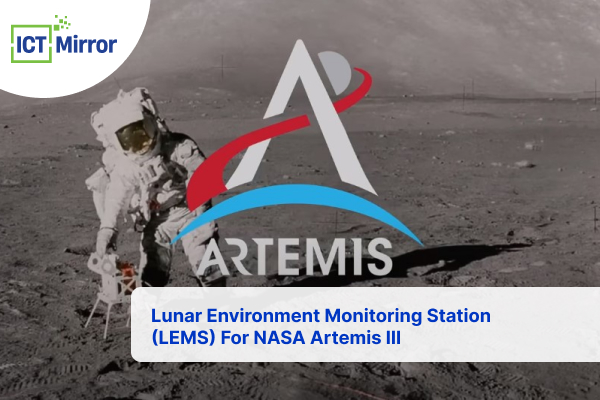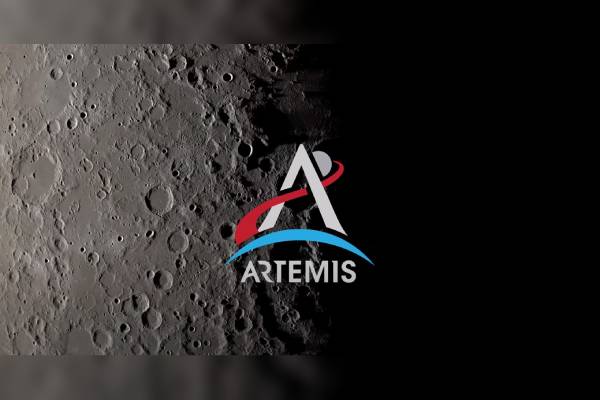Lunar Environment Monitoring Station (LEMS) For NASA Artemis III

Lunar Environment Monitoring Station. Image Credit: Social Media.
NASA is getting ready for its Artemis III mission, which will be a historic moment. With this mission, NASA hopes to uncover all the secrets of the moon.
Once again, astronauts will reach the surface of the moon with their new Lunar Environment Monitoring Station.
As NASA prepares equipment and plans for the journey, its crew will reach the lunar surface once again in 2026.
Is Artemis III the most Complex Mission Ever?
NASA claims Artemis III to be one of the most complex missions of engineering and creativity, which will help us explore space further and know more about the moon.
The mission will mainly focus on the moon’s atmosphere, terrain properties, radiation patterns, and chemical composition.

Lunar Environment Monitoring Station. Image Credit: Social Media.
The data, samples, and observations covered by the astronauts will eventually expand our understanding of space, the moon, and the solar system.
NASA is planning to send LEMS (Lunar Environment Monitoring Station), LEAF, and LDA to the moon, so let’s learn and know more about them,
LEMS: Lunar Environment Monitoring Station
LEMS was developed by NASA’s Goddard Space Flight Center; it is specially designed to monitor the lunar exosphere.
Lunar Environment Monitoring Station is self-sufficient and is designed to work independently for an extended time period.
NASA has put it under testing, so we are sure it can withstand the lunar environment, which will make LEMS valuable to make human presence stable on the moon.

Lunar Environment Monitoring Station. Image Credit: Social Media.
According to NASA, LEMS will be able to collect data on the moon’s exosphere for about two years after landing. Since then, NASA has spent a lot of money to research habitation on the moon.
LEMS will be able to provide important information on the Lunar surface, which will potentially impact human habitation efforts. Also, this instrument will be able to monitor moonquakes.
Lunar Environment Monitoring Station can also become the key station in the future global lunar geophysical network, according to NASA.
ALSO READ: NASA SpaceX Crew-7 Splashdown: ISS Crew Members Earth Returned
LEAF: Lunar Effects on Agricultural Flora
LEAF will be responsible for college data and exploring the moon’s environment and whether agriculture is possible or not.
LEAF will also focus on the moon’s effect on space crops and photosynthesis, growth, and plants’ reaction to space radiation.
This will help NASA create a suitable environment for growing crops and determine whether plants grown on the moon are suitable for human nutrition.
The data collected by LEAF will help scientists to make a sustainable agricultural system on the moon or Mars for long missions.
However, one of the major challenges is to replicate the Earth’s environment on the moon, so this mission will definitely give us more info on real-world data.
LDA: Lunar Dielectric Analyzer
The Lunar Dielectric Analyzer is another important part of Artemis III, which will be responsible for measuring the regolith’s ability to propagate an electric field.
LDA will give us more info on the dielectric properties of the regolith and properties related to how materials interact with the electric field.
This will give scientists more data about the composition, structure, and moisture content of the moon.

Lunar Environment Monitoring Station. Image Credit: Social Media.
Most importantly, With all the info on LDA in the future, NASA will be able to design structures and habitats for the moon.
This will not only be good for long missions but will also be a step forward for human habitation on the moon.
also, with all the info, NASA might be able to uncover if there are any valuable resources on the moon, like water, which can be trapped in ice or polar crates.
Meet The Crew Of Artemis III
Reid Wiseman will be the commander of the mission. Reid was selected as a astronaut on 2009 and is currently the commander of the Artemis mission.
Victor J. Glover is the pilot of the mission who was selected by NASA as an astronaut in 2013. He previously was part of Space X Crew 1 and is currently assigned as a pilot for the Artemis III mission.

Lunar Environment Monitoring Station. Image Credit: Social Media.
Christina Koch, who has been an astronaut for NASA since 2013, has worked as a flight engineer for Expedition 59, 60, and 61 missions. Koch is also part of the mission and will be working as mission specialist.
Jeremy Hansen is a Canadian Space Agency who will be working as a mission specialist alongside Christina Koch. He will also be the first Canadian to venture to moon.
Similarly, you might want to read about How Are Nikon Cameras Enhancing NASA Artemis Lunar Mission?
Main Goals Of Artemis III
Demonstrate new technologies
NASA has always been working on new technologies and innovations that change people’s lives.
In this mission, they will test new systems and technologies and work on technologies that humans need to successfully and sustainably explore space.
NASA can expect to work on a lunar-orbiting gateway, descent, and ascent vehicles, and insult resource utilization.
Scientific Research
As mentioned before, Artemis III is mainly focused on learning about the moon’s geology and whether it has any natural resources.
With LEAF, LDA, and LEMS(Lunar Environment Monitoring Station), scientist will be able to understand the potential of moon and if it is suitable for human habitation.
Develop infrastructure
Mainly, NASA has mentioned creating a base for astronauts and future missions, mainly Artemis Base Camp.
This will allow them to conduct long-term missions and make missions on the moon more sustainable with reusable habitats.
Inspire and educate
Artemis, without a doubt, caused huge excitement worldwide in and gave more attention to space exploration.
Just like how a whole generation was inspired by Apollo missions, Artemis III will inspire young generations in space travel.
Another Mission To The Moon
Artemis III will be the first time for humans to go to the moon after the legendary Apollo mission in 1972.
Although this mission was completed by the United States, the whole world will witness this historic event.
This time, NASA has focused this mission on demonstrating its new technologies and conducting scientific research like never before with the help of Lunar Environment Monitoring Station.
NASA is aiming to develop infrastructure on the moon and take human habitation to the next step.
Hopefully, NASA will be successful in launching a foundation for future missions to the moon, mars, and beyond.
Did you notice an error ?
Please help us make corrections by submitting a suggestion. Your help is greatly appreciated!











